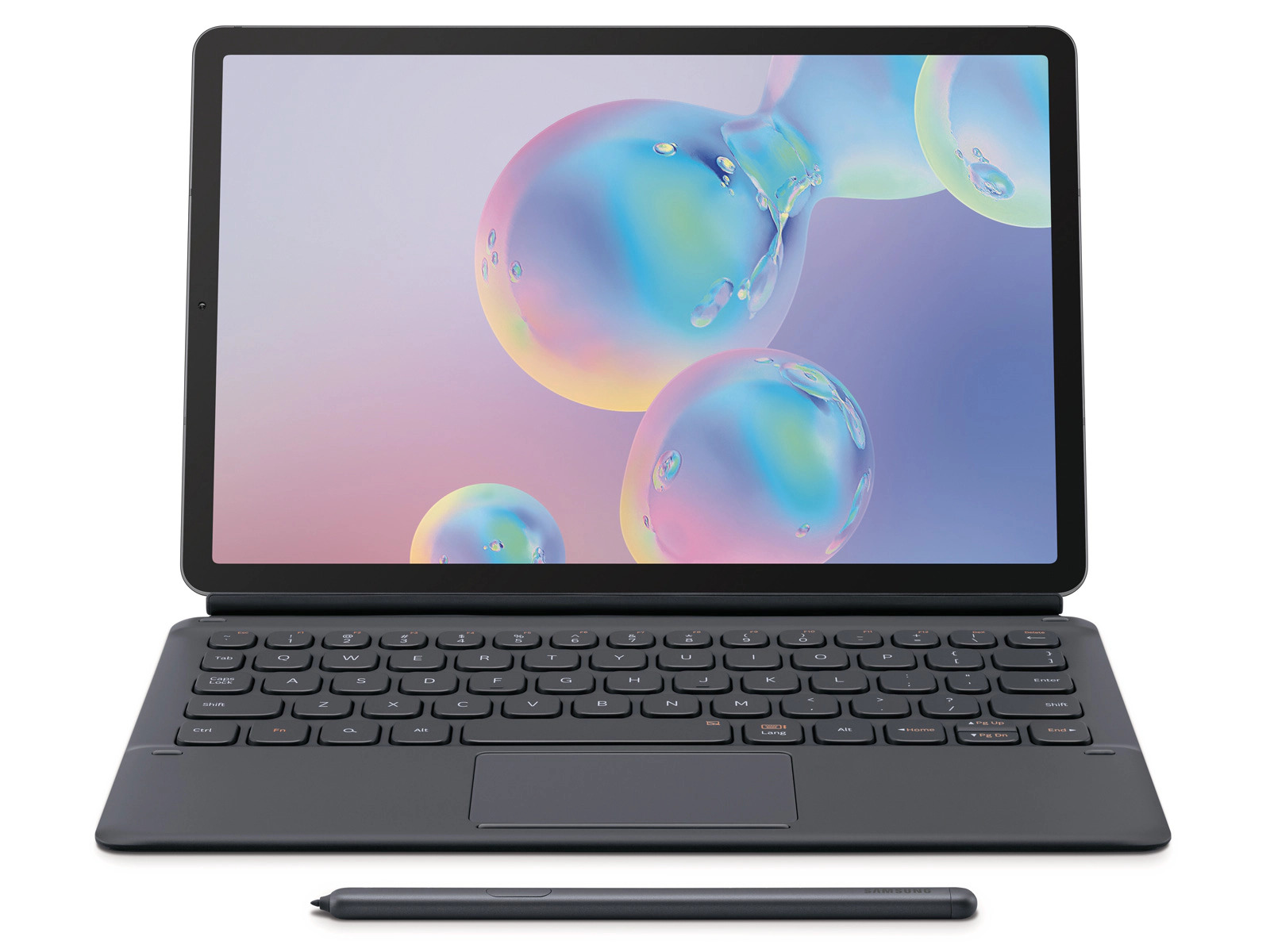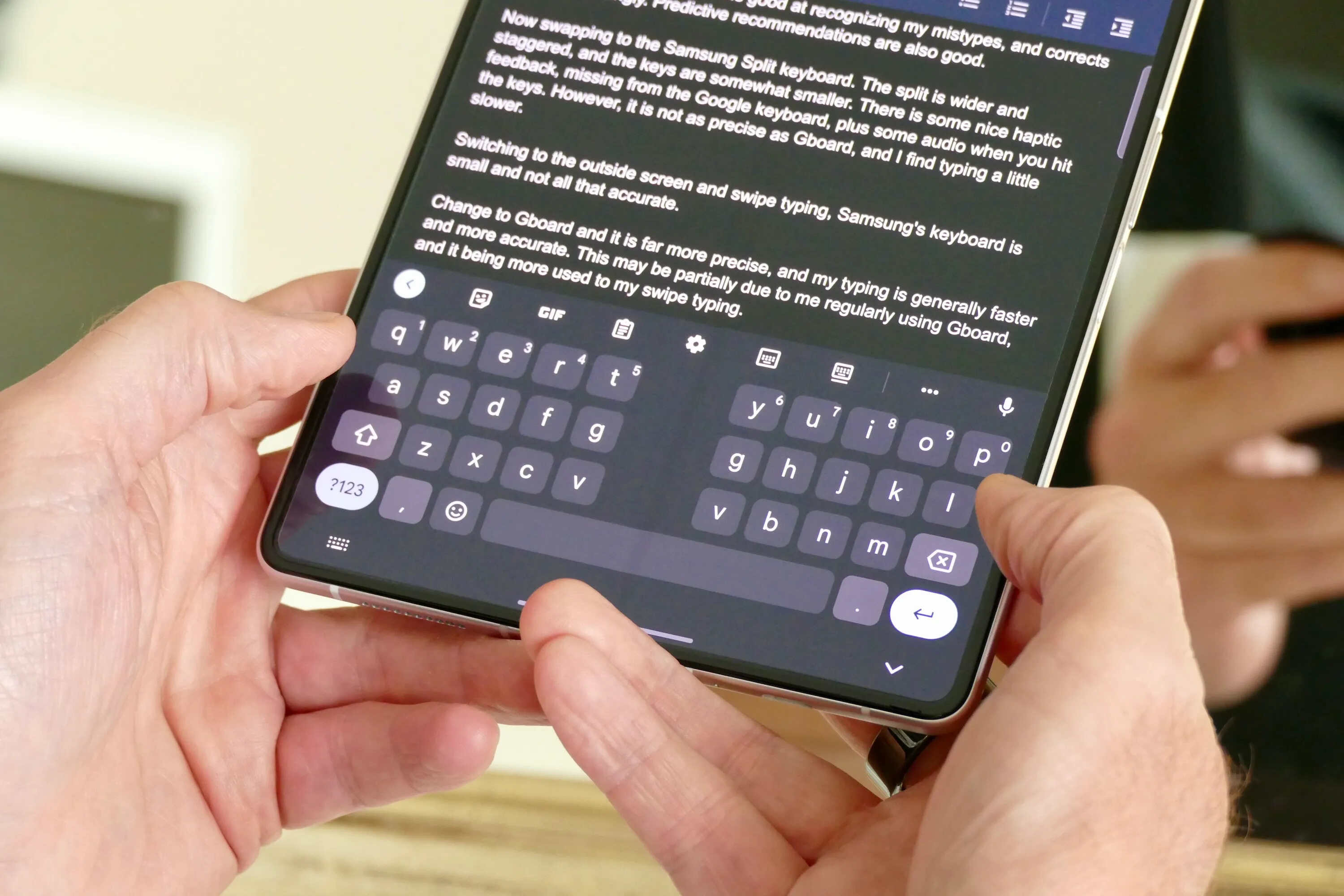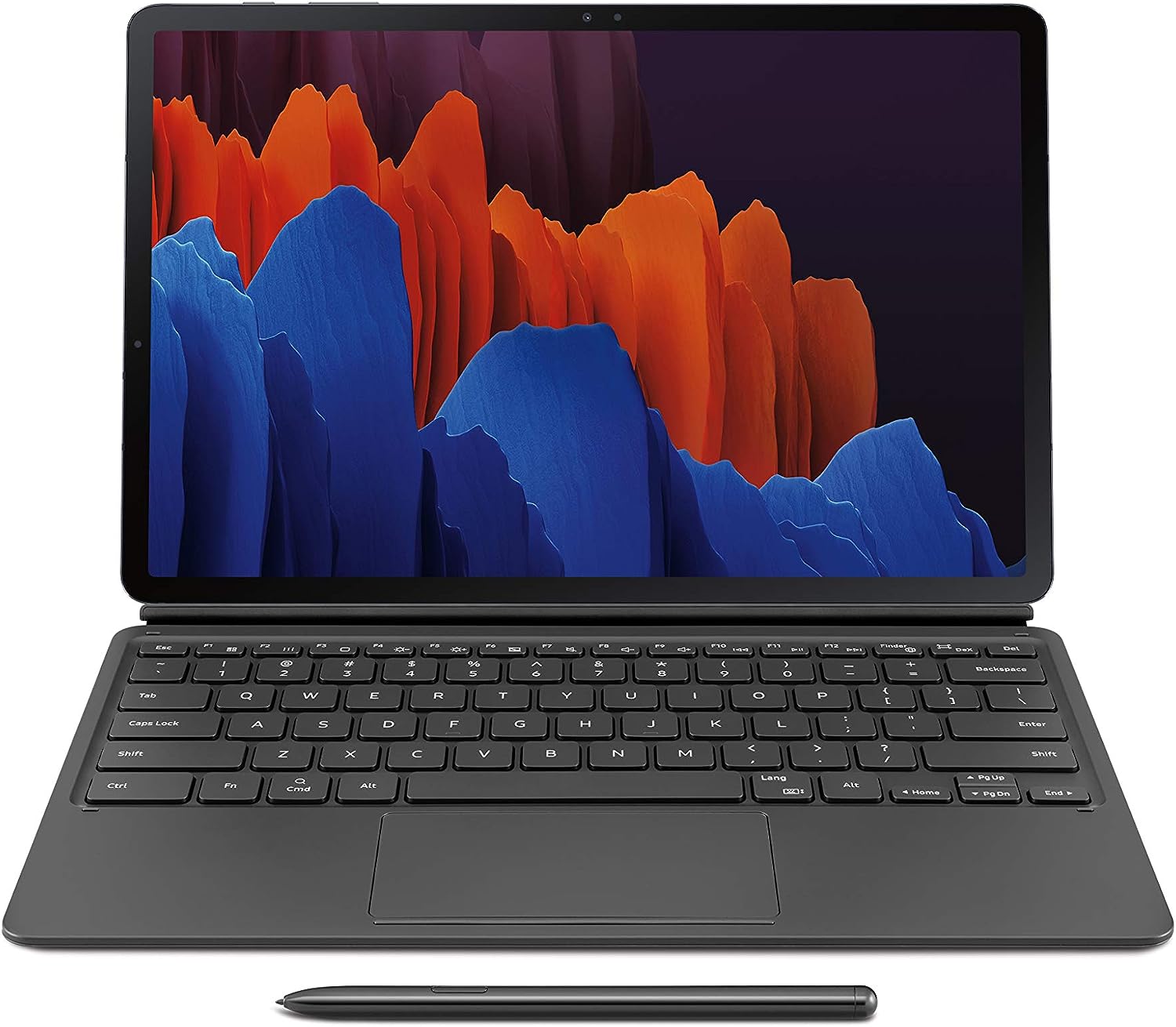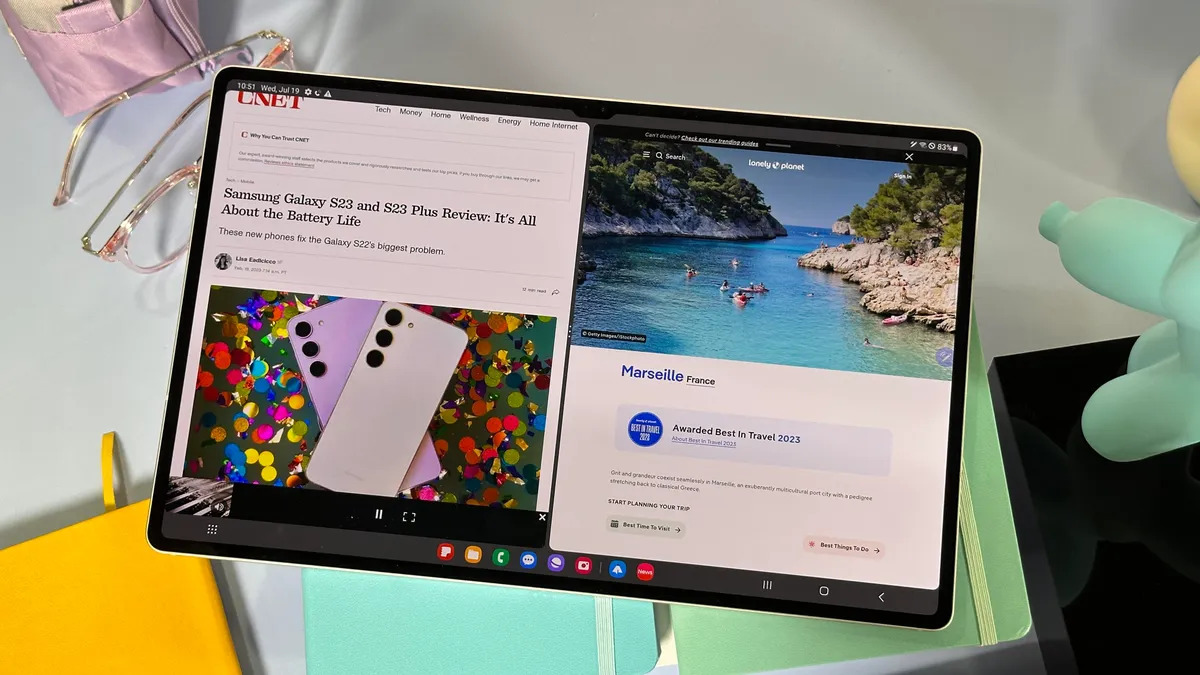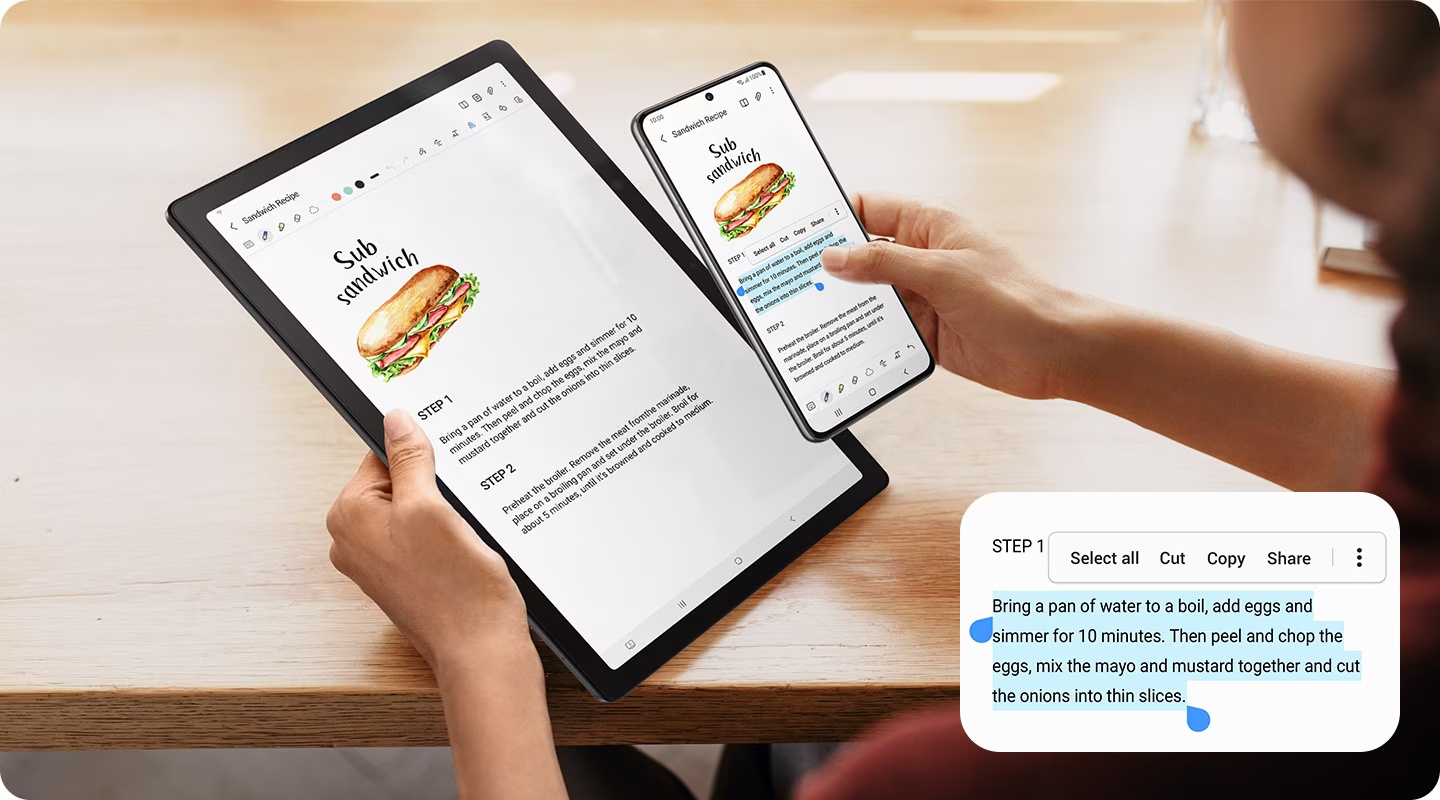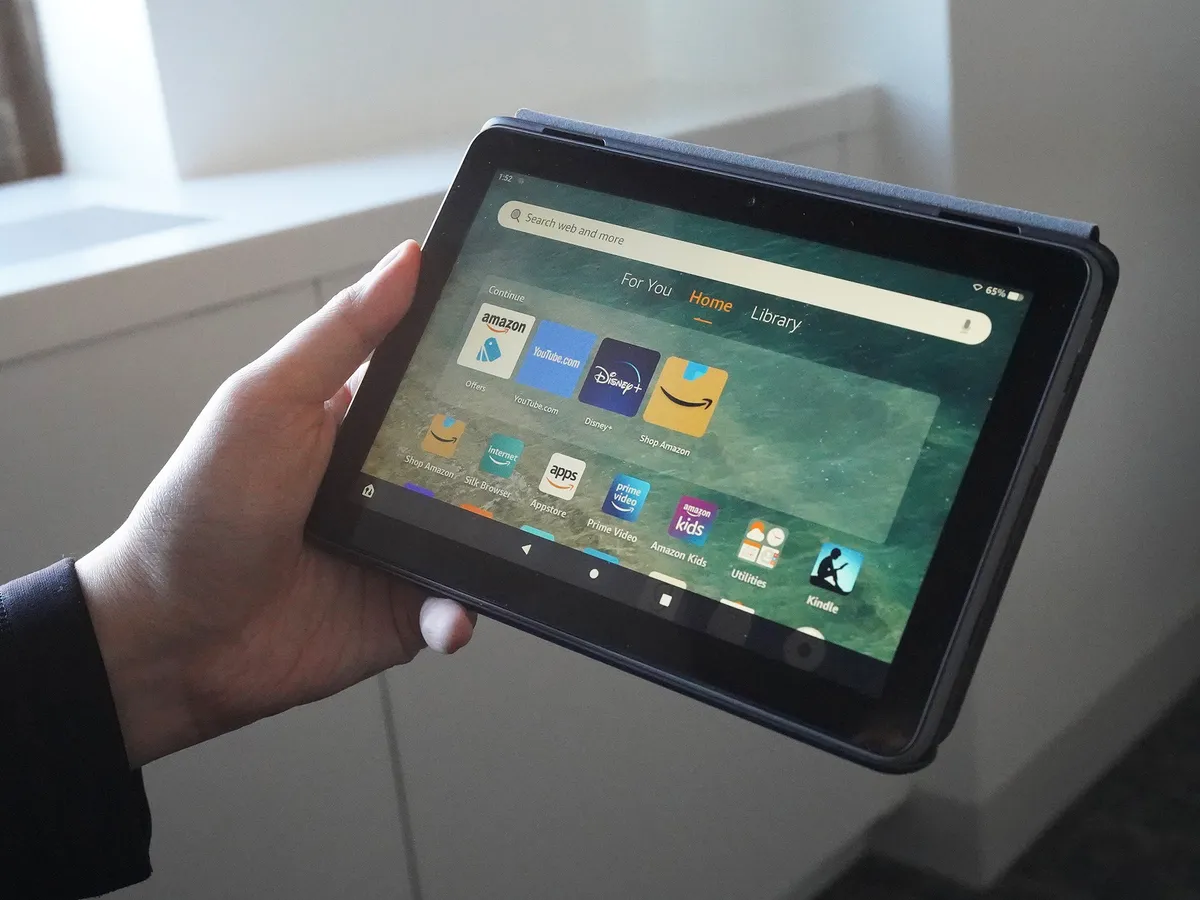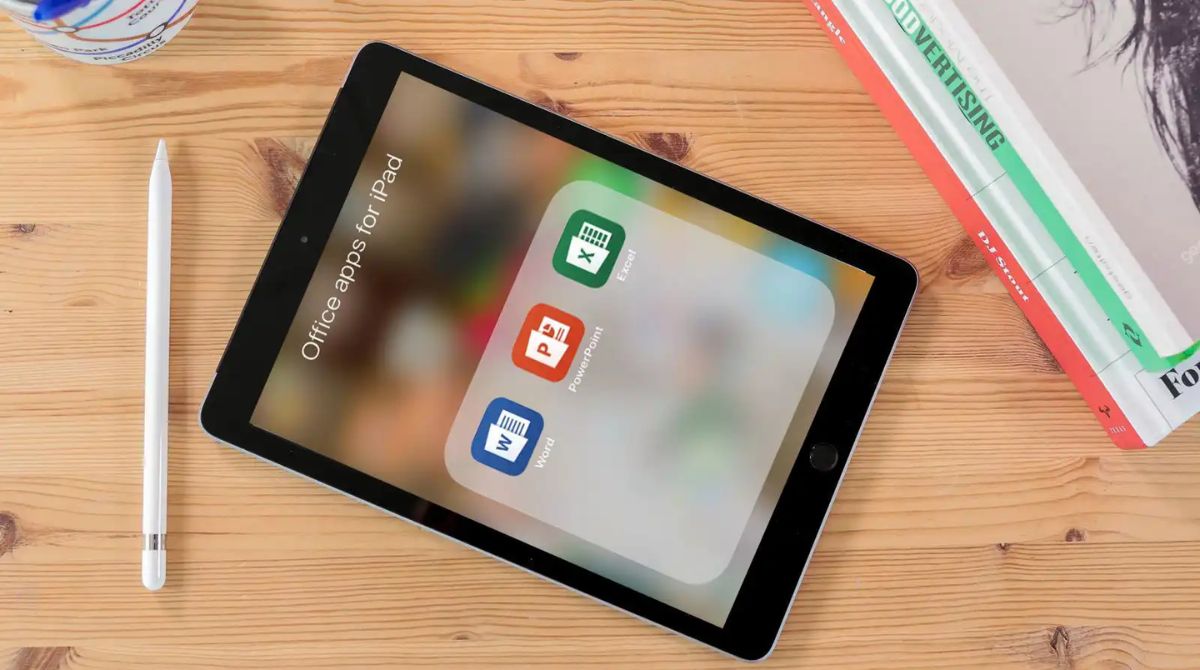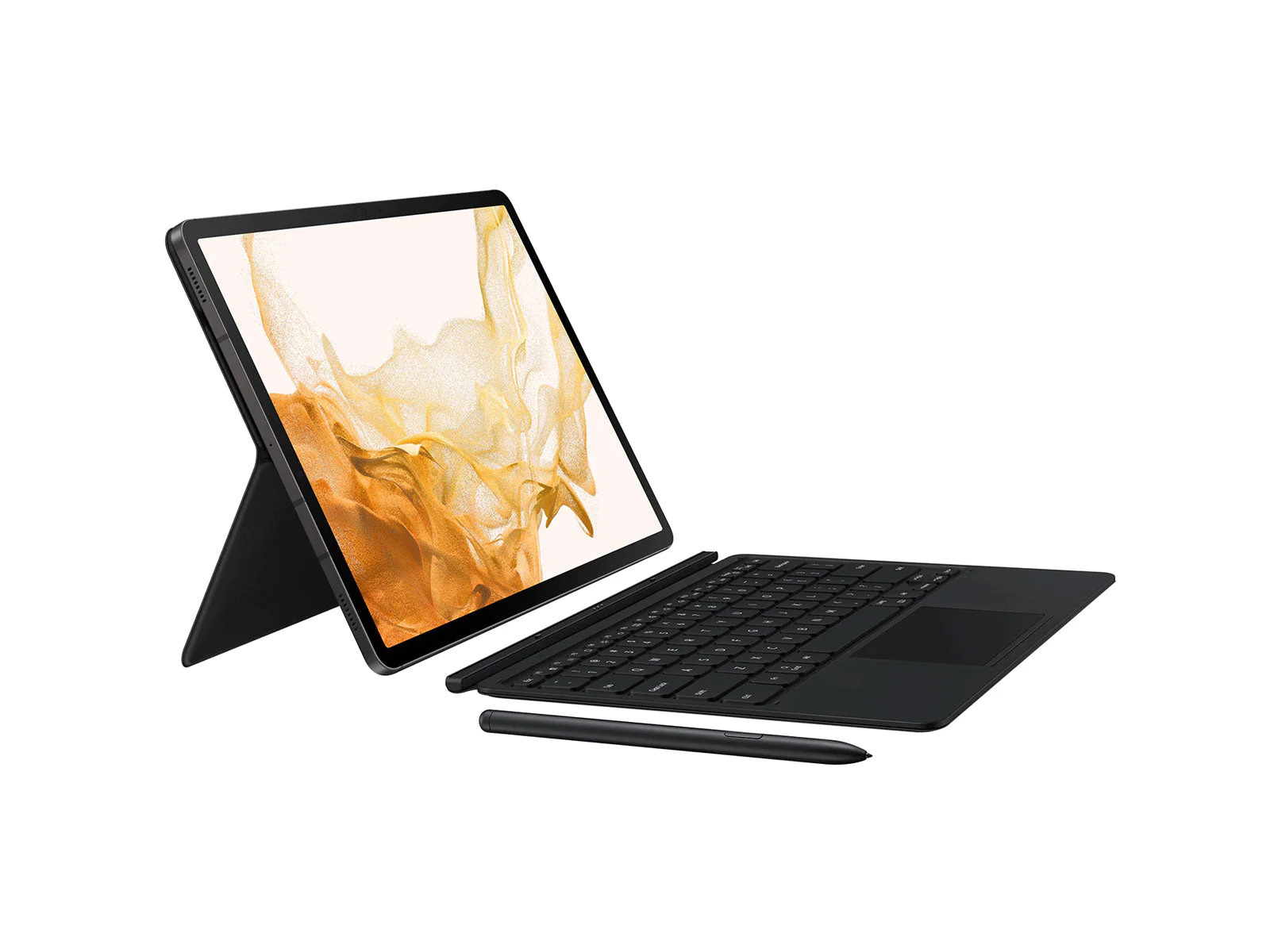Introduction
Welcome to the era of tablets, where the boundaries between a laptop and a touchscreen device blur. Samsung tablets have become a popular choice due to their sleek design, user-friendly interface, and powerful functionality. However, if you are new to using a Samsung tablet, you may be wondering how to bring up the keyboard.
Whether you need to type an email, compose a document, or simply search the web, having quick access to the keyboard is essential. Luckily, Samsung tablets offer multiple options to bring up the keyboard, including both on-screen and hardware keyboard options.
In this article, we will guide you through the process of bringing up the keyboard on your Samsung tablet. We will cover both the on-screen keyboard and the hardware keyboard, as well as provide tips on customizing keyboard settings and troubleshooting common keyboard issues. So, let’s dive in and discover how to easily bring up the keyboard on your Samsung tablet.
How to Bring Up Keyboard on Samsung Tablet
When it comes to bringing up the keyboard on your Samsung tablet, you have two main options: using the on-screen keyboard or enabling the hardware keyboard. Let’s explore each of these options in detail.
Using the On-Screen Keyboard:
To bring up the on-screen keyboard on your Samsung tablet, simply tap on any text field or input box. This could be a search bar, a messaging app, a web browser, or any other application that requires text input. Once you tap on the field, the on-screen keyboard will automatically appear, allowing you to start typing.
The on-screen keyboard offers a variety of features to enhance your typing experience. You can switch between different input methods, such as QWERTY or a swipe-to-type option, depending on your preference. Additionally, you can access symbols, emojis, and other special characters directly from the keyboard.
Enabling the Hardware Keyboard:
If you prefer a physical keyboard, you can connect an external hardware keyboard to your Samsung tablet. This is especially useful if you need to type for an extended period or if you prefer the tactile feel of physical keys.
To enable the hardware keyboard, simply connect it to your tablet using a USB cable or via Bluetooth. Once connected, your tablet will automatically detect the keyboard, and you can start using it immediately. Keep in mind that not all Samsung tablet models support hardware keyboard connectivity, so make sure to check the specifications of your tablet beforehand.
Now that you know how to bring up the keyboard on your Samsung tablet using both the on-screen and hardware options, let’s move on to customizing the keyboard settings to suit your preferences.
Using the On-Screen Keyboard
The on-screen keyboard on your Samsung tablet provides a convenient and versatile way to type. Here are some key features and tips to enhance your typing experience:
1. Switching Input Methods: The on-screen keyboard offers different input methods, such as QWERTY, 3×4 keypad, or swipe-to-type. You can switch between these options by tapping the keyboard icon located at the bottom right corner of the on-screen keyboard.
2. Accessing Special Characters: To access special characters, symbols, or emojis, simply tap the symbol key located at the bottom left corner of the on-screen keyboard. This will bring up a menu with a wide range of options for you to choose from.
3. Utilizing Text Prediction: The on-screen keyboard utilizes text prediction to help you type faster. It suggests words as you type, based on your previous inputs and commonly used phrases. To accept a suggested word, simply tap on it. You can also turn off text prediction or customize its settings in the keyboard settings menu.
4. Resizing the Keyboard: If you find the on-screen keyboard too large or small, you can adjust its size to better suit your needs. Simply long-press the settings key (gear icon) located at the bottom right corner of the keyboard and choose the “Resize” option. You can then drag the resize handle at the bottom edge of the keyboard to make it larger or smaller.
5. Split Keyboard: When using your tablet in landscape mode, you can split the on-screen keyboard to make it easier to type with your thumbs. To enable this feature, long-press the settings key (gear icon) and select “Split keyboard”. You can then drag the keyboard halves to your preferred position.
The on-screen keyboard on your Samsung tablet offers a range of features and customization options to make your typing experience efficient and enjoyable. Feel free to explore the various settings and experiment with different input methods to find the one that works best for you.
Enabling the Hardware Keyboard
If you prefer the tactile feel and precision of a physical keyboard, you can connect a hardware keyboard to your Samsung tablet. Here’s how to enable and make the most of your hardware keyboard:
1. Connect via USB: To connect a USB keyboard to your tablet, simply plug the USB cable into the USB port of your tablet and connect the other end to the USB port of the keyboard. Once connected, your tablet will automatically recognize the keyboard, and you can start typing right away.
2. Connect via Bluetooth: If you have a Bluetooth-enabled keyboard, you can connect it to your Samsung tablet wirelessly. To do this, make sure your Bluetooth keyboard is turned on and in pairing mode. On your tablet, go to Settings > Connections > Bluetooth, and toggle the Bluetooth switch to enable it. Select your keyboard from the list of available devices and follow the on-screen instructions to complete the pairing process.
3. Keyboard Shortcuts: Hardware keyboards often come with additional keys and shortcuts that can enhance your productivity. These shortcuts can vary depending on the keyboard model, but common ones include media playback controls, volume adjustment, screen brightness, and launching specific apps. Refer to the user manual or manufacturer’s website for information on the specific keyboard shortcuts available for your device.
4. Adjust Keyboard Settings: Once your hardware keyboard is connected, you can customize its settings to suit your preferences. On your tablet, go to Settings > General management > Language and input > On-screen keyboard. From here, select the physical keyboard option and explore the available settings. You can adjust the key press sound, enable or disable auto-capitalization, and configure other options to optimize your typing experience.
Enabling a hardware keyboard offers a more traditional typing experience and can be particularly beneficial for prolonged typing sessions, such as typing long documents or emails. Make sure to choose a keyboard that suits your needs and preferences, and enjoy the seamless typing experience it brings to your Samsung tablet.
Customizing Keyboard Settings
Customizing the keyboard settings on your Samsung tablet can help you personalize your typing experience and make it more efficient. Here are some key settings you can adjust to suit your preferences:
1. Key Press Sound: To add sound feedback when typing, you can enable the key press sound. On your tablet, go to Settings > General management > Language and input > On-screen keyboard. Select the keyboard you’re using and toggle the “Key-tap sound” switch to enable the sound effect.
2. Auto-Capitalization: By default, the keyboard automatically capitalizes the first letter of a sentence. If you prefer to disable this feature, go to the keyboard settings (Settings > General management > Language and input > On-screen keyboard) and toggle the “Auto-capitalization” switch to turn it off.
3. Text Prediction: The keyboard can suggest words as you type, making typing faster and more convenient. To customize text prediction settings, go to the keyboard settings and select “Text prediction.” From here, you can enable or disable text prediction, adjust the prediction bar’s appearance, or add personal language data for more accurate suggestions.
4. Keyboard Layout and Language: If you use multiple languages or prefer a different keyboard layout, you can add or change the keyboard language and layout settings. On your tablet, go to Settings > General management > Language and input > On-screen keyboard. Select the keyboard you want to customize and navigate to the language and layout options. Here, you can add new languages, select different layouts, and even enable multilingual typing.
5. Keyboard Themes: Some Samsung tablets offer the option to change the keyboard theme to match your style or preferences. Go to Settings > General management > Language and input > On-screen keyboard and select the keyboard you’re using. Look for the “Keyboard theme” option and choose from the available themes or download new ones from the Samsung Theme Store.
By exploring and customizing the keyboard settings on your Samsung tablet, you can create a typing experience tailored to your needs. From sound feedback to language preferences and more, take advantage of these settings to enhance your productivity and enjoyment while typing.
Troubleshooting Keyboard Issues
While Samsung tablets are known for their reliable performance, you may encounter some keyboard-related issues from time to time. Here are some common problems and their potential solutions:
1. Keyboard Not Appearing: If the on-screen keyboard does not appear when you tap on a text field, make sure the keyboard is not disabled in your tablet’s settings. Go to Settings > General management > Language and input > On-screen keyboard and ensure that the keyboard you want to use is enabled. If it’s already enabled and still not appearing, try restarting your tablet.
2. Slow or Laggy Keyboard: If you experience slowness or lag when typing on the on-screen keyboard, there are a few things you can try. First, clear the cache and data of the keyboard app. Go to Settings > Apps > (Keyboard App Name) > Storage > Clear Cache / Clear Data. If the problem persists, consider updating the keyboard app or using a different keyboard app from the Google Play Store.
3. Keyboard Layout Issues: If you’re using a hardware keyboard and notice that the keys are not functioning as expected, it may be due to an incorrect keyboard layout. Make sure that the selected keyboard layout matches the physical layout of your keyboard. You can adjust the layout settings by going to Settings > General management > Language and input > Physical keyboard.
4. Bluetooth Keyboard Connection Problems: If you’re having trouble connecting a Bluetooth keyboard to your Samsung tablet, make sure that the keyboard is in pairing mode and the tablet’s Bluetooth is enabled. Also, check if the keyboard batteries are charged. If the connection still fails, try unpairing the keyboard from your tablet’s Bluetooth settings and then re-pairing it.
5. Unresponsive Keys: If specific keys on your hardware keyboard are unresponsive or not working, try cleaning the keyboard with compressed air or a soft brush to remove any debris. If that doesn’t solve the issue, consider contacting the manufacturer for further assistance.
If none of the above solutions resolve your keyboard issues, you may want to consider performing a factory reset on your tablet. However, please note that this will erase all data on your device, so make sure to back up your important files before proceeding.
By following these troubleshooting steps, you can resolve common keyboard-related issues and ensure a smooth typing experience on your Samsung tablet.
Conclusion
Bringing up the keyboard on your Samsung tablet is a crucial step to unlock its full potential for productivity, communication, and other tasks. By following the steps outlined in this article, you can easily bring up the on-screen keyboard or connect a hardware keyboard to your tablet.
Once you have the keyboard ready, don’t forget to explore and customize its settings to suit your preferences. From adjusting sounds and text prediction to changing the layout and language, the keyboard settings offer a range of options to enhance your typing experience.
However, it’s not uncommon to encounter keyboard-related issues. Whenever you face problems like the keyboard not appearing, slow performance, or unresponsive keys, refer to the troubleshooting tips provided to identify and resolve the issue.
Remember, practice makes perfect when it comes to typing on your tablet. Take your time to familiarize yourself with the on-screen keyboard’s features and shortcuts, or enjoy the comfort and precision of a hardware keyboard. With regular use, you’ll become more proficient and efficient in your typing tasks.
Now armed with the knowledge of how to bring up and customize the keyboard on your Samsung tablet, you can make the most of this versatile device and enjoy a seamless typing experience. Happy typing!







